-

THE OPPOSITE OF GLOSSY
-“Nobody wants to invade Marseille” claims Rudy Ricciotti,
architect of the MuCEM.And yet everyone is flocking there since the Museum of Civilisations
of Europe & of the Mediterranean, dubbed MuCEM, opened its doors just weeks ago, the first national museum to open in the Phocean city, a project 11 years in the making.Having shot & directed the introductory ad campaign for this new institution, The Stimuleye introduces you to the man who designed it, a man as famous for the fights he picks as the building he designs.
Exclusive photos by René Habermacher.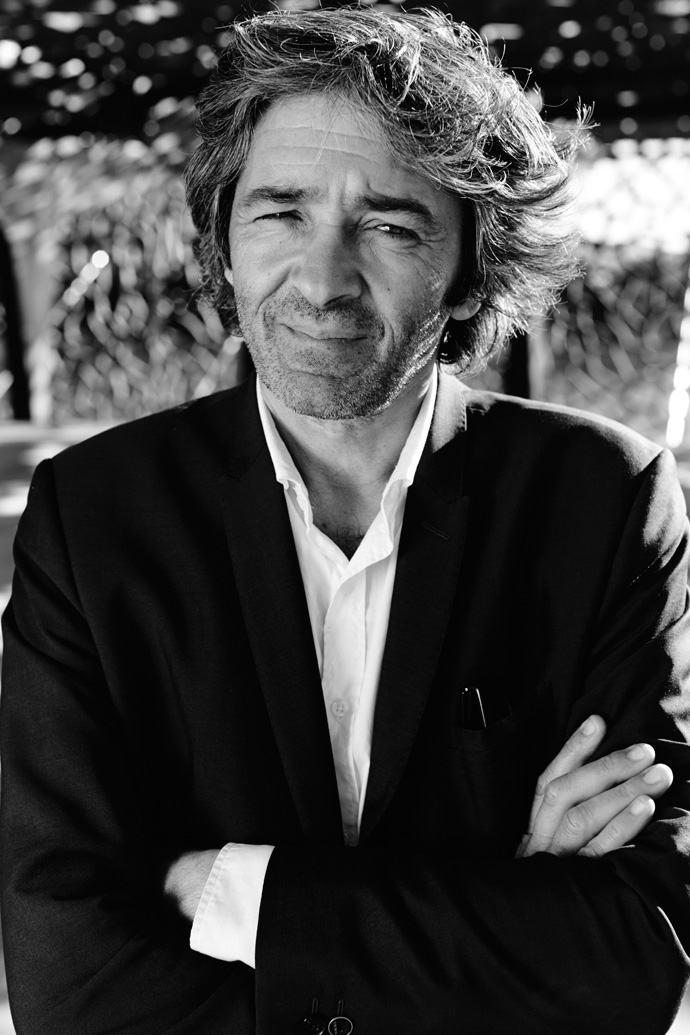 Portrait of architect Rudy Ricciotti by René Habermacher.
Portrait of architect Rudy Ricciotti by René Habermacher.One side is the Fort Saint-Jean, linked to the city by a pedestrian steel bridge. A fort not unlike the Bastille – a bastion to defend Marseille against itself – the Fort Saint-Jean had been closed to the public for centuries.
On the other, also connected by a massive steel bridge, is Ricciotti’s creation, facing the Mediterranean Sea.
Refusing “architectural bling,” Ricciotti chose to have the new building dematerialize itself to complement the Fort Saint-Jean.No reflections – leave it to the sea.
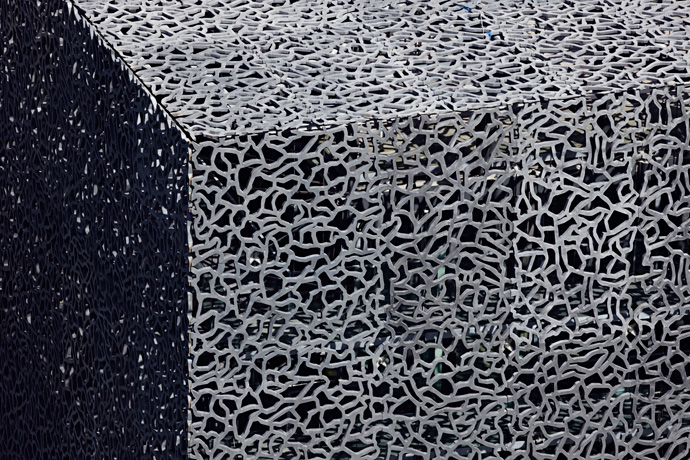
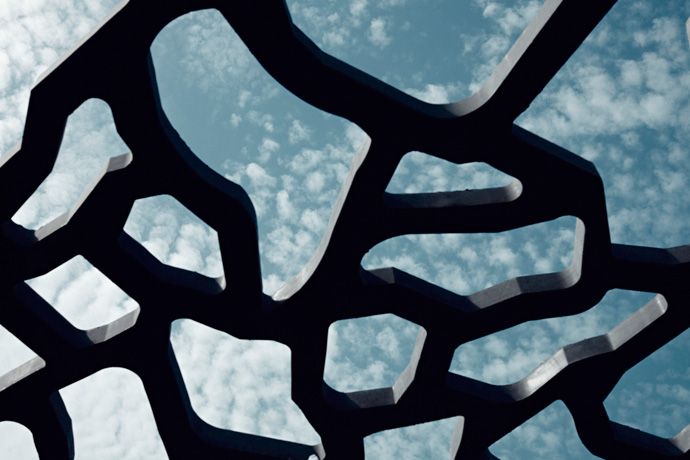
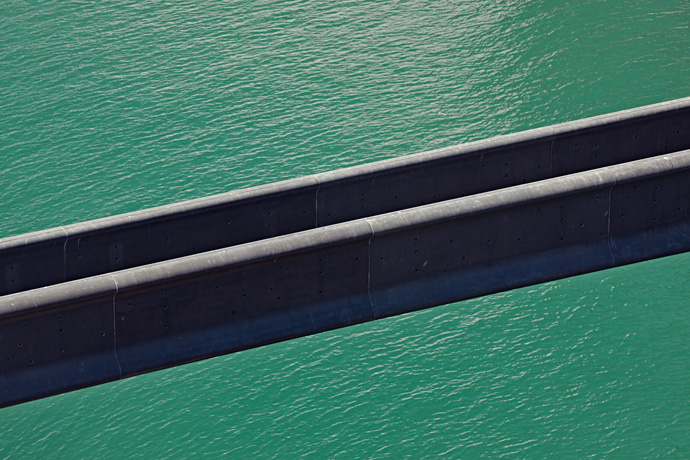
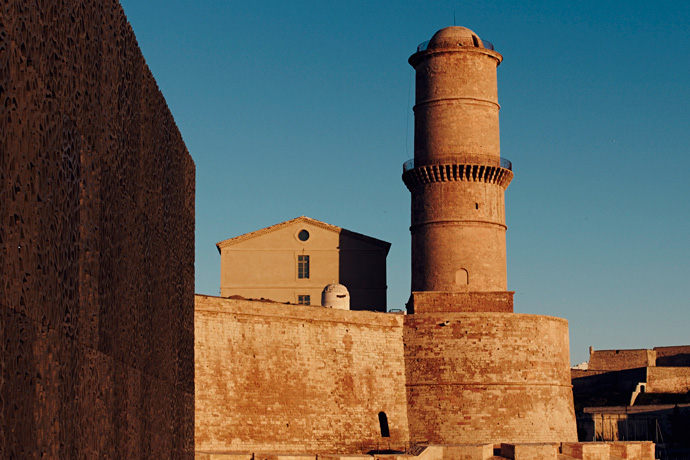 The concrete filigree lace of the MuCEM, a second skin like a screen that allows views, light and air
to pervade the space. Photography by René Habermacher.
The concrete filigree lace of the MuCEM, a second skin like a screen that allows views, light and air
to pervade the space. Photography by René Habermacher.TV spot for the MuCEM's launch, directed by Antoine Asseraf with SayWho and Agence White.
 The MuCEM's a porous monolithic body planted on pier J4 in the Mediterranean sea, connected to the Fort Saint-Jean
with a 115m long slender pathway made of massive cast iron. Photography by René Habermacher.
The MuCEM's a porous monolithic body planted on pier J4 in the Mediterranean sea, connected to the Fort Saint-Jean
with a 115m long slender pathway made of massive cast iron. Photography by René Habermacher.Antoine Asseraf: Can you elaborate on your theory of world being split between two sides, matte and shiny ?
Rudy Ricciotti: Shiny is conceptual distance, reason, power and self-assurance.
Matte is frontal narration, intuition, defeat and regret.
Pick your side… I did.AA: Mediterranean is a concept going beyond “local” but stopping short of “global” — how do you situate yourself, and the building, within that notion ?
RR: The South is a travel certificate, not a birth certificate.
The inhabitants of Munich are more mediterranean than those of Grenoble.
The Valais region in the south of Switzerland more latin than the Vaucluse in the south of France, etc.
The MuCEM is mediterranean through anxiety and existential difficulty.AA: What is your relationship to monumental architecture ?
RR: You are talking to me, you fucked my wife ?
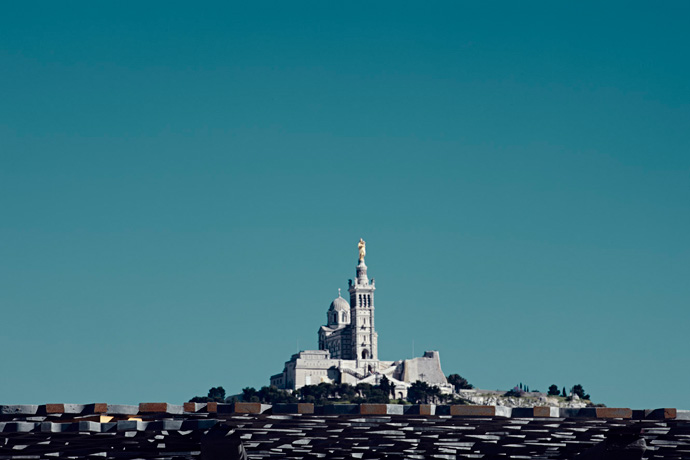
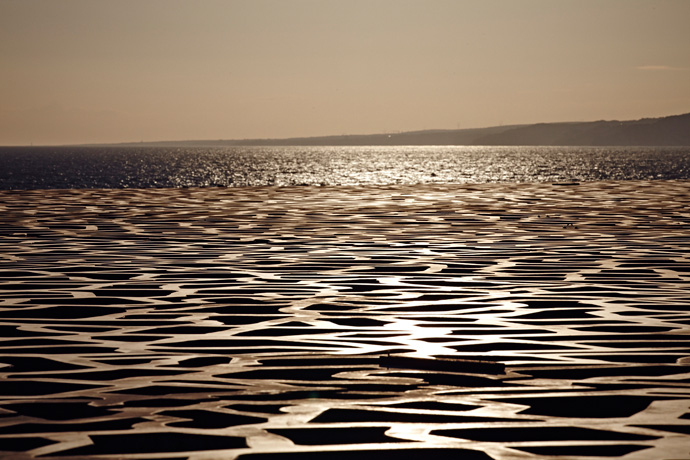
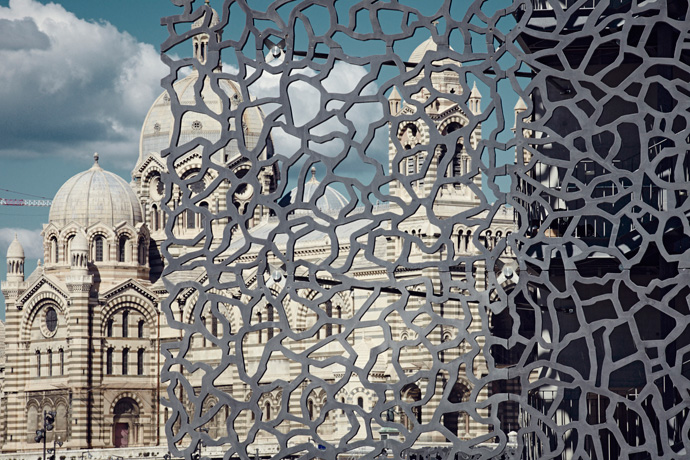
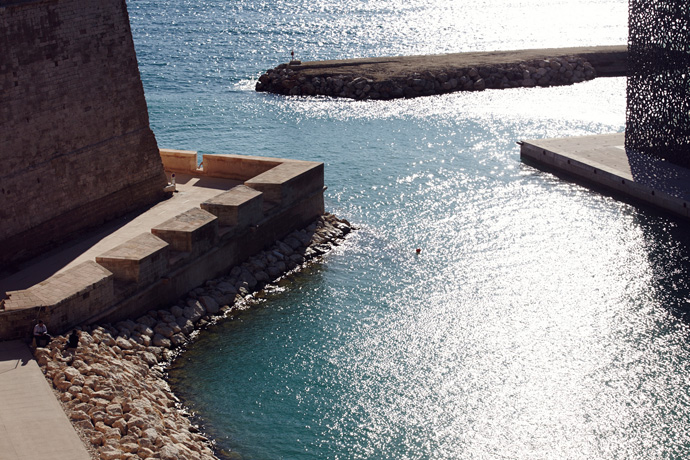 Top left: "Notre-Dame de la Garde" looming over Marseille and the the seven-level, 40 000 square meter
structure of the MuCEM. Photography by René Habermacher.
Top left: "Notre-Dame de la Garde" looming over Marseille and the the seven-level, 40 000 square meter
structure of the MuCEM. Photography by René Habermacher.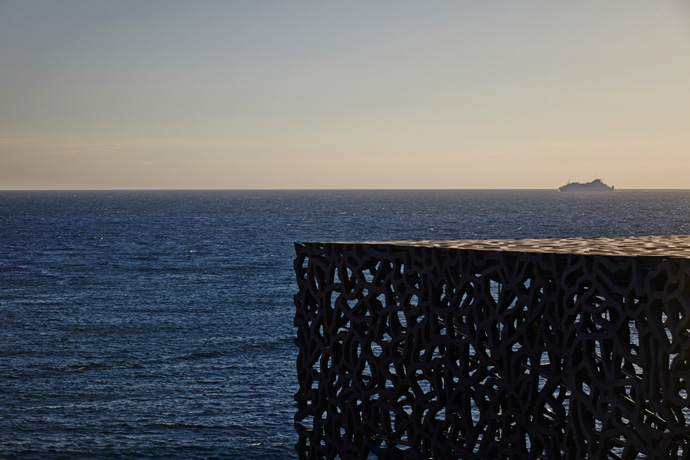
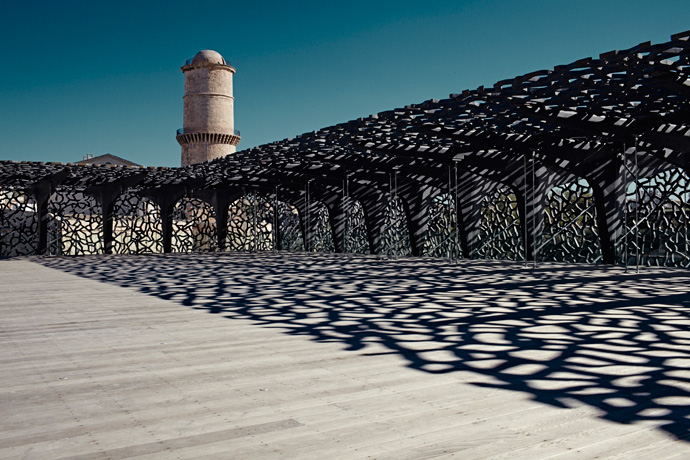
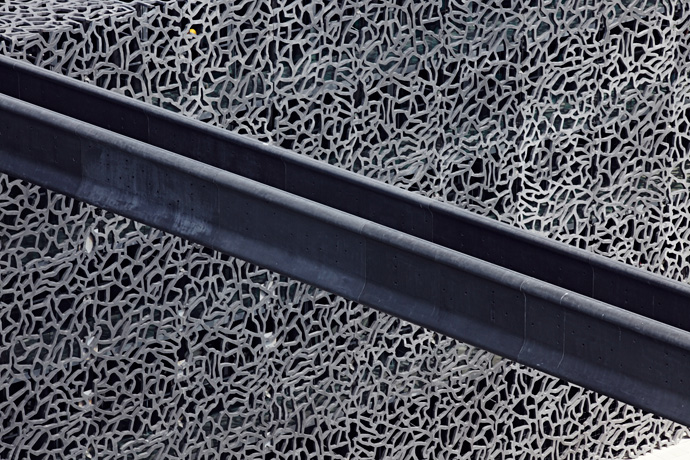
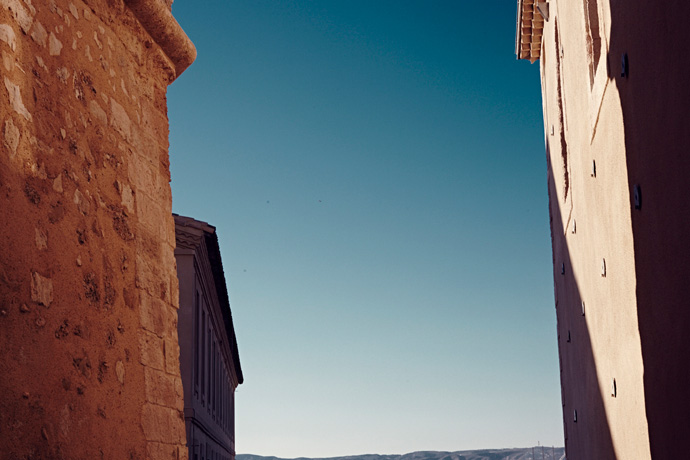 As massive the volume of the MuCEM may seem at first, it is the use of negative space that gives the building
the air of the metaphysical. Photography by René Habermacher
As massive the volume of the MuCEM may seem at first, it is the use of negative space that gives the building
the air of the metaphysical. Photography by René HabermacherAA: What is the last thing which stimulated you ?
RR: A fish soup made by my partner…
Read my last pamphlet to smile:
« L’Architecture est un sport de combat » [Architecture is a combat sport], edited by Textuel.With SayWho & Agence White
10 -

MATT PYKE AND FRIENDS: that idea of foreverness
-The future is back.
That’s the impression you get from Matt Pyke’s new show at Gaîté Lyrique, Paris’ brand new digital creation center. Mutating monsters, illuminated silences, evolving creatures, disintegrating dancers, glowing trees… Pyke and his friends from the studio Universal Everything use every corner of new-old parisian theater to make your head swirl. Literally.
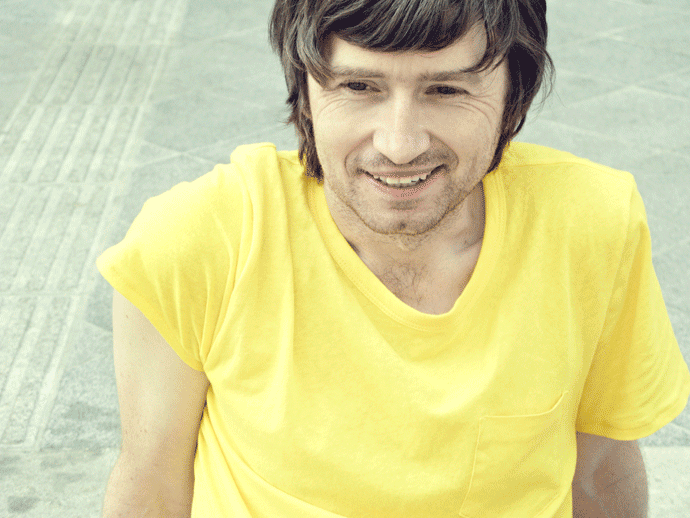 Meet Matt Pyke. Photo by René Habermacher
Meet Matt Pyke. Photo by René HabermacherANTOINE ASSERAF: I noticed everything is looping, there is no beginning and no end. What as your intention with that?
MATT PYKE: One of the reasons for the looping is we’re really interested in the idea of infinity and how it creates video artworks which don’t really have a narrative story to them.
We’re creating almost a video sculpture, a state of mind or a trance-like situation: for example where dancers that are continually struggling up the wall to get to the sound or the giant walking monster in TRANSFIGURATION which is walking forever and nobody knows where he is going.
It’s that idea of foreverness and how you can use video to do that as an artwork that never stops: everything is almost like a machine that is going and going…
Matt Pyke & Friends : Super-Computer-Romantics
Sometimes you have some very un-digital elements like drawing.
I studied drawing and painting at art school and still find it very important to have a pencil as well as a computer. All of the artworks were based on drawings originally. The archive of the Gaîté Lyrique has a collection with all the working drawings from all the artpieces.
In the exhibition, the one called SEVENTY SIX SEEDS was entirely created through drawing but influenced by the more recent years where i’ve been working with people who use codes. The drawings are very much influenced by digital processes and the shapes that code make.
We’ve made an iPhone application that gave me kind of genetic instructions of what type of seed what type of plant to draw every morning- so it’s a way of using technology to control me, control my pencil.
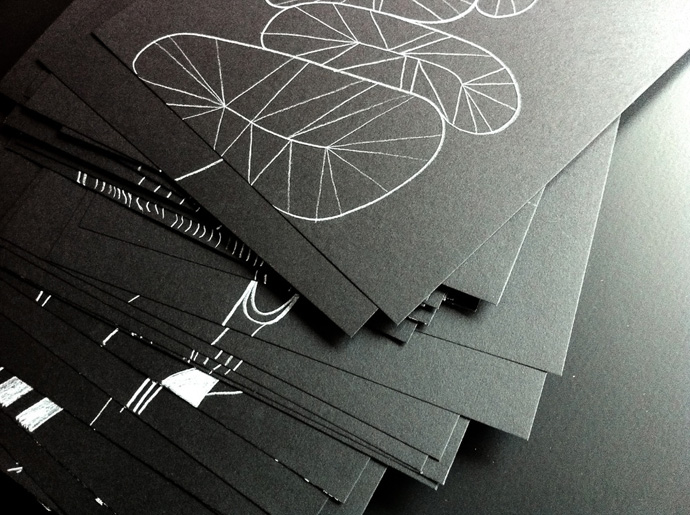
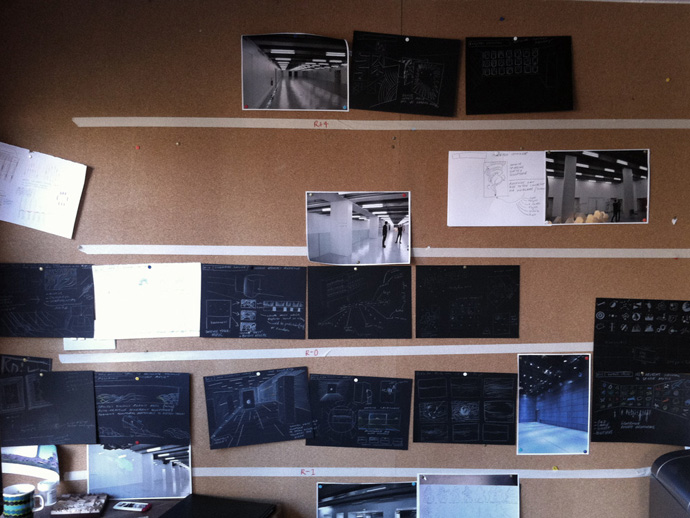 Works in Progress: left Matt Pykes drawings for SEVENTY SIX SEEDS inspired after an iPhone application.
Images Courtesy of Matt Pyke
Works in Progress: left Matt Pykes drawings for SEVENTY SIX SEEDS inspired after an iPhone application.
Images Courtesy of Matt PykeDo you code and program yourself or are you trying to bring that kind of “old school” thinking into that?
I intentionally do not code and program myself. I tried to learn and found it did not suit me, so I focus on the conceptual side of things and the visual side of things in terms of art direction and creative direction and come up with the initial seed idea and then work with programmers who are genuinely experts or super talent in their field.
I think one important thing is, by me not understanding code, that my ideas are not restricted to what is possible.